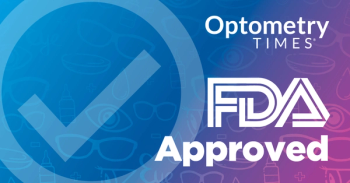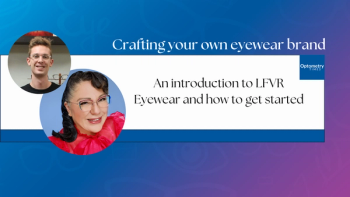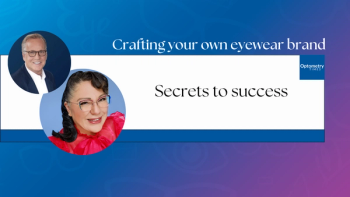
Help prevent demodex’s chronic lid and lash problems
Asking your patients to spend a few minutes a day brings big benefits
We have seen patients come in complaining of red, irritated, dry eyes, plus a range of other complaints. A diagnosis wasn’t always necessarily pinpointed, but we treated this “blepharitis” with warm compresses, baby shampoo, or an antibiotic/steroid combination drop. Our patients had some improvement but the symptoms never really went away.
Fortunately, research and treatment options continue to improve each year. These improvements allow us to treat our patients better than before. Lid and lash hygiene should be a discussion we have with every patient.
Forms of Demodex
Eyecare practitioners can effectively treat many lid and lash conditions with these new options. One of the conditions we hear about frequently at lectures is demodex.
The most common forms of demodex that affect our patient’s lashes are Demodex brevis and Demodex folliculorum. Both of these species are intradermal parasites that thrive on sebaceous glands and follicles in humans. We see these specifically on the lashes of our patients.
In the past, we would have simply called this condition blepharitis. However, today almost 84 percent of what we see on our patient’s lashes is actually demodex. As our patients age, the prevalence of demodex also increases. Traditionally warm compresses, baby shampoo, and antibiotic/steroid combo ointment are the options we would have tried. They would typically decrease some of the symptoms, they would not help treat the actual problem of demodex.1
Research has shown that tea tree oil helps to kill demodex.2 More products are becoming available to help fight demodex and improve our patient’s lid and lash hygiene.
Let’s take a look at several of them.
Cliradex
Cliradex (Cliradex) is a pre-moistened towelette that contains tea tree oil meant to clean lids, lashes, and face. This product is intended for patients with meibomian gland dysfunction (MGD), blepharitis, demodex, rosacea, and other lid diseases.
Cliradex is preservative free and is found over the counter. It can be used once or twice a day. The company recommends that you use this product for at least 60 days to get rid of demodex mites. Daily maintenance is recommended.3
Related:
Blephadex
Blephadex (Lunovus )comes in both an eyelid foam cleanser and pre-moistened wipes. Blephadex specifically contains tea tree oil to help combat demodex mites. It is recommended to be used once daily continuously for treatment, maintenance, and prevention.
Blephadex is available only
A prescription pad with your specific physician code can be sent to your office with their various products that you can prescribe to the patient.4
BlephEx
BlephEx (RySurg) is an in-office procedure to remove demodex and help promote lid and lash hygiene care. A medical grade micro sponge is spun along the lid margin to remove bacteria and excess biofilm. A topical anesthetic is typically instilled prior to the procedure, which lasts six to eight minutes. After the procedure, the eyelids are washed.
The company recommends repeating this process in about six to eight months. The patient is sent home with instructions on how to properly clean his lids and lashes during the interim.5
Related:
Ocusoft
OcuSoft offers multiple products to clean the lids and lashes, including:
• Lid Scrub Original pads
• Lid Scrub Original Foam
• Lid Scrub Plus pads
• Lid Scrub Original Foam Plus
• Lid Scrub and Foam Plus Platinum
• Lid Scrub and Foam HypoChlor
• Oust Demodex Cleanser
Ocusoft Lid Scrub Pads and Foam both in the Original and Plus formulations are intended to clean the lids and lashes as a daily regimen. Both the Original and the Plus contain surfactants that help reduce the oil and amount of debris that has built up on the lashes.
Ocusoft’s Hypochlor contains hyperchlorous acid and is intended to be used alongside with Original/Plus and not on a daily basis, according to the company. All of these products are beneficial for patients with anterior blepharitis.
Oust Demodex comes in both a foam and a pad. Oust is a stronger formulation that contains tea tree oil specifically to combat demodex mites.
All of the products are for at-home use, and samples are available for patients. Patients can purchase
Prescribe lid hygiene products
Products continue to emerge for in-office applications and products for our patients to use at home.
Just as we prescribed glaucoma and antibiotic medications, we should also prescribe products for lid and lash hygiene. Dentists discuss hygiene with their patients with a daily regimen to keep their teeth clean and healthy and to prevent disease. As optometrists, we should discuss lid and lash hygiene with each patient. Many patients wash their faces but certainly forget to take any care in keeping their lids and lashes clean.
As a female OD, I like to talk with my female patients about lid and lash hygiene specifically because of eye makeup. Many products like eye mascara, eyeliner, and eyeshadows can create more problems concerning blepharitis and demodex.7
Related:
I discuss the importance of replacing makeup more frequently, using an antimicrobial cleaner to keep makeup brushes clean, not to share makeup with anyone, and how to properly clean their lids and lashes more thoroughly.
Many makeup lines are safe and hypoallergenic. I tell my patients to look at the back of the bottle or tube as many products will say that they are ophthalmology approved. Infection and irritation can stem from unhealthy habits with makeup and beauty routines. Taking a few extra minutes with our female patients to discuss lid and lash hygiene as it pertains to makeup will decrease the amount of complications further down the road.
We can easily overlook findings right in front of us. Taking the time to do a thorough slit lamp exam, discuss the lash and lid hygiene, and prescribe treatment options instead of recommendation can lead to healthier lids and lashes.
Disclosures:
1. Czepita D, Kuà ºna-Grygiel W, Czepita M, Grobelny A. Demodex folliculorum and Demodex brevis as a cause of chronic marginal blepharitis. Ann Acad Med Stetin. 2007;53(1):63-7; discussion 67.
2. Tighe S, Gao YY, Tseng SC. Terpinen-4-ol is the Most Active Ingredient of Tea Tree Oil to Kill Demodex Mites. Transl Vis Sci Technol. 2013 Nov;2(7):2.
3. Cliradex website. Available at: www.cliradex.com. Accessed 12/8/16.
4. Lunovus website. Available at: http://lunovus.us/product/blephadex-eyelid-wipes/. Accessed 12/8/16.
5. RySurg website. Available at: http://www.rysurg.com/doctors/index.php/how-does-blephex-work.html. Accessed 12/8/16.
6. Ocusoft website. Available at: www.ocusoft.com. Accessed 12/8/16.
7. O’Dell LE, Sullivan AG, Periman LM. Uncover patient lifestyle habits that lead to OSD. Optometry Times. 2016 Nov. Available at: http://optometrytimes.modernmedicine.com/optometrytimes/news/uncover-patient-lifestyle-habits-lead-osd. Accessed 12/8/16.
Newsletter
Want more insights like this? Subscribe to Optometry Times and get clinical pearls and practice tips delivered straight to your inbox.


















































.png)


